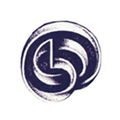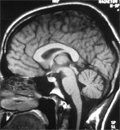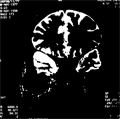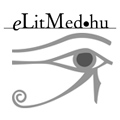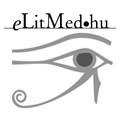The eLitMed.hu medical portal uses computer cookies for convenient operation. Detailed information can be found in the Cookie-policy.
Clinical Neuroscience - 2002;55(11-12)
Content
[The role of transcranial magnetic stimulation in clinical diagnosis: facial nerve neurography]
[Facial nerve neurography involving magnetic stimulation techniques can be used to assess the intracranial segment of the facial nerve and the entire facial motor pathway, as opposed to the traditional neurography, involving only extracranial electric stimulation of the nerve. Both our own experience and data published in the literature underline the value of the method in localising facial nerve dysfunction and its role in clinical diagnosis. It is non-invasive and easy to perform. Canalicular hypoexcitability has proved to be the most useful and sensitive parameter, which indicates the dysfunction of the nerve between the brain stem and the facial canal. This is an electrophysiological finding which offers for the first time positive criteria for the diagnosis of Bell’s palsy. The absence of canalicular hypoexcitability practically excludes the possibility of Bell’s palsy. The technique is also able to demonstrate subclinical dysfunction of the nerve, which can be of considerable help in the etiological diagnosis of facial palsies. For example, in a situation where clinically unilateral facial weakness is observed, but facial nerve neurography demonstrates bilateral involvement, etiologies other than Bell’s palsy are more likely, such as Lyme’s disease, Guillain-Barré syndrome, meningeal affections etc. Furthermore, the technique differentiates reliably between peripheral facial nerve lesion involving the segment in the brain stem or the segment after leaving the brainstem.]
[The efficacy of autologous free fat graft and Spongostan in preventing postmicrodiscectomy scar formation]
[Introduction - Postoperative scar formation has been implicated as one of the possible cause of persistent or recurrent pain after spine surgery. The efficacy of the autologous free fat graft and the Spongostan gel foam for the prevention of extradural adhesion after lumbar discectomy was investigated by the evaluation of postoperative neurological symptomps and visual analogue scale. Patients and methods - In the study 174 patients were involved, average 14.5 months after the intervention. Autologous free fat graft (group I) and Spongostan gel foam (group II) was used randomly by the operations. Patients were operated by the same surgeon, and they were investigated by another independent surgeon. Result - No significant difference was found between the two groups.]
[Relationship between the efficacy of atypical antipsychotics and polymorphism of dopamine D3 receptor in schizophrenia]
[Object - Numerous relevant variants of dopamine receptors have been identified in schizophrenia. The Ser9Gly gene polymorphism of dopamine D3 receptor is known as a susceptibility factor for the disease. In addition, it has a role in the modification of therapeutic effect of antipsychotics. In this naturalistic study the authors investigated the relationship between this polymorphism and the therapeutic response to atypical antipsychotics. Method - 75 patients with schizophrenia according to DSM-IV and 45 healthy controlls were recruited. The patients were divided to responder and nonresponder subgroups, cut-off: >20 point improvement in Global Assessment of Functioning. By polymerase chain reaction the genotype of dopamine D3 receptor of every participant was determined. Results - The Ser9Ser genotype of dopamine D3 receptor was more frequent in the nonresponder subgroup (64%, p=0.0018). The Ser9 allele was overrepresented among nonresponder patients (82%, p=0.0172). Conclusion - Based on our results, the worse therapeutic response to atypical antipsychotics is associated with Ser9 variant of dopamine D3 receptor.]
[Friedreich-ataxia - diagnosis after a decade. Differential diagnosis of inherited spinocerebellar ataxias]
[The clinical diagnosis of inherited spinocerebellar ataxias is difficult, because phenotypes frequently overlap. The authors attempt to review the different inherited ataxia syndromes, discussing the most frequent one, Friedreich-ataxia in detail. The case of a patient with Friedreich-ataxia is presented, where the genetically supported diagnosis has been made more than ten years following the onset of the symptoms, after several hospitalizations and misdiagnosis. The correct diagnosis can be established based on the Geoffroy-Harding criteria and gene mutation analysis.]
[Hormonal abnormalities caused by intrasellar persistent trigeminal: PTA with hormonal dysfunction]
[Persistent trigeminal artery is a relatively frequent type of intracranial arterial developmental anomalies. The diagnostic tools for demonstration previously consisted of carotid angiography, later CT and DSA and nowadays MR and MRA. The practical benefit of the diagnosis is to avoid any hazard at the operation of associated hypophysis adenomas and aneurysms and could also give a possible explanation for apparent hormonal abnormalities. The authors support the latter possibility with a case report.]
[The use of ECT for epileptic patient]
[Psychiatric disorders which indicate the use of electroconvulsive therapy (ECT) also occur in epileptic patients, but there is a lack of medical authority concerning the use of ECT in epileptic patients. This is surprising because in recent years it has been proved that ECT has an anti-convulsive effect to some degree. A case study of an epileptic patient is presented whose progress has been monitored for several years. Antiepileptic drugs were seemingly able to control his epilepsy but at the same time progressive behavioural disturbance (schizophreniform psychosis) accompanied by agitation and violent behaviour developed. Considering the recurrent psychotic decompensations and the relative ineffectiveness of antipsychotics, the authors decided to administer ECT. As a result they were able to bring about the longest symptom free balanced period in the patient. According to the data based on previous medical studies and the experience they can suppose that ECT is not immediately contraindicated by the presence of epilepsy with active interictal focus if the psychopathological condition makes it necessary. In view of the epileptogenic risk factors of classical neuroleptics, the epileptogenic effects of accompanying psychosis and the probable anticonvulsive potential of ECT in cases of severe psychiatric complications accompanying epilepsy ECT could be used more frequently.]
1.
Clinical Neuroscience
[Headache registry in Szeged: Experiences regarding to migraine patients]2.
Clinical Neuroscience
[The new target population of stroke awareness campaign: Kindergarten students ]3.
Clinical Neuroscience
Is there any difference in mortality rates of atrial fibrillation detected before or after ischemic stroke?4.
Clinical Neuroscience
Factors influencing the level of stigma in Parkinson’s disease in western Turkey5.
Clinical Neuroscience
[The effects of demographic and clinical factors on the severity of poststroke aphasia]1.
2.
3.
4.
5.
